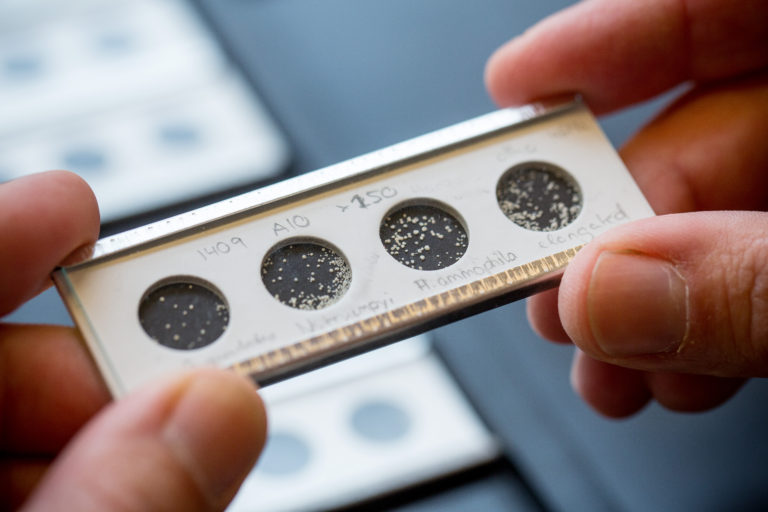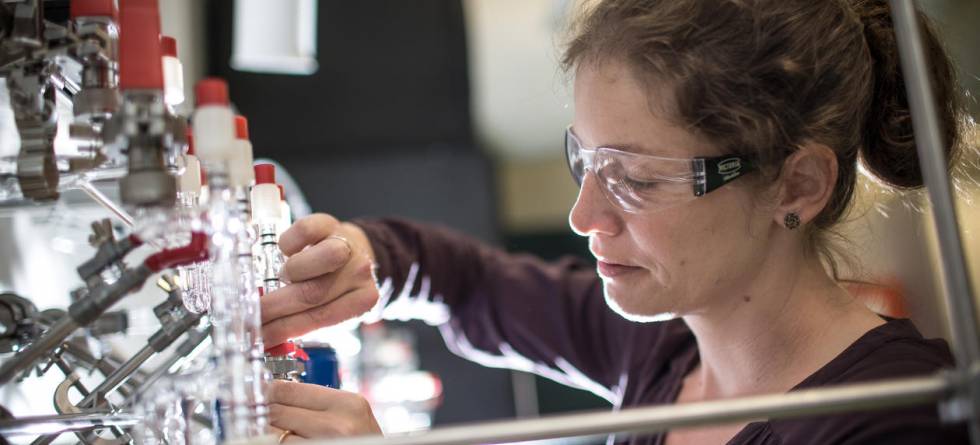Meet Nele Meckler at the «Fantastisk forskning» program of «Forskning i Front» at the University Aula in Bergen the 18th of October. She works on reconstructing climates of the past. In this podcast she tells you how atoms snuggle together at certain temperatures, and how fossil sea-shells could easily be transformed into CO2.
By Kim Andreassen, UiB. First published on uib.no
Funded by an ERC Starting Grant and support from the Bergen Research Foundation(BFS), researcher Nele Meckler at the Department of Earth Science at the University of Bergen (UiB) is developing a technique for reconstructing temperatures in the past, by using fossil shells from the ocean.
“My big goal is to use this method to find out exactly how the climate changed when we know that the global climate system underwent substantial reorganisation, for example 35 million years ago,” says Meckler.
“We are motivated by the fact that the climate is changing today. If we understand how the different parts of the climate system interacted in the past, we will be able to better predict what will happen in the future.”
Discovering the climate of the past
Climate researchers do not yet have detailed knowledge about how the climate changed millions of years ago. It could simply have been caused by ocean circulation, ocean temperature or the ice sheets, or a combination of these.
“There are many different components in the climate system that can change simultaneously. We need better tools to be able to distinguish the different parts of the climate system,” Meckler points out.
At the moment Meckler is in the process of improving her method, so-called clumped isotope thermometry. With this technique, she is able to look at small isotope signals in micro-fossil shells from drilled ocean sediment cores.
The geochemical signals from the fossils reveal the temperature on the ocean surface or the ocean floor at the time when the fossil was growing, millions of years ago.
“The improvement is about adjusting the instruments to be able to analyse small samples, like these fossil shells, to achieve my goal for the C4T research project ,” says Meckler about her research project, which bears the full name Climate change across Cenozoic cooling steps reconstructed with Clumped Isotope Thermometry.

Bergen covers all aspects of climate research
Meckler started working on the method ten years ago with colleagues at the California Institute of Technology (Caltech), and she continued working on it at ETH Zürich before arriving in Bergen in early 2015.
According to Meckler she moved her project to UiB because of the unique climate research environment in Bergen.
“Not only is the Bjerknes Centre for Climate Research well renowned internationally, but the climate research conducted at the University of Bergen covers all aspects of the topic. You basically have a colleague in every field of climate research next door to discuss the subject with,” Nele Meckler says.
See also the C4T Homepage and the CLIP Homepage

